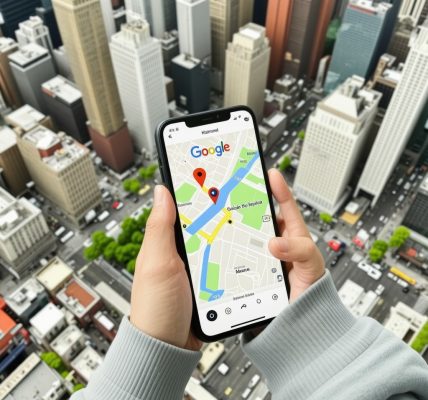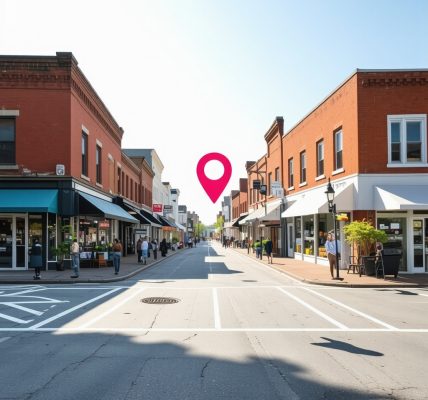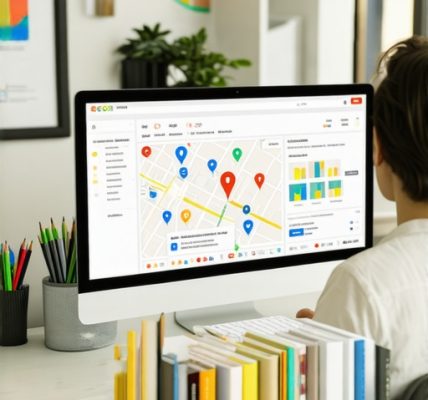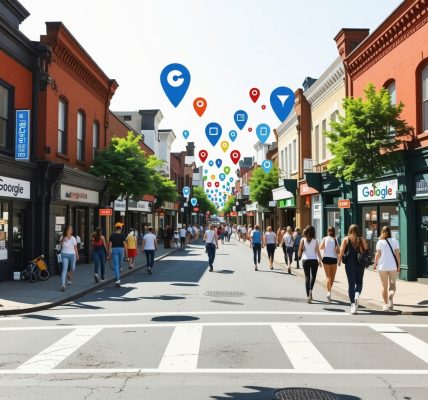Unlocking the Power of Google Maps for Local Dominance
In today’s hyperconnected world, optimizing your Google Maps listing isn’t just a nice-to-have—it’s a critical business imperative. Local search queries now drive a significant portion of consumer behavior, making your Google Maps presence a frontline battlefield for visibility, credibility, and customer acquisition. Yet, many businesses overlook fast, effective optimization techniques that can yield immediate results. This guide dives deep into quick ways to optimize Google Maps listing for local search, blending expert insight with actionable tactics that empower your local SEO strategy.
Precision Profiling: Crafting an Irresistible Google Business Profile
Google Maps optimization begins with the foundation: your Google Business Profile (GBP). Accuracy and completeness are paramount. Ensure your business name, address, and phone number (NAP) are consistent across all platforms—a factor Google heavily weighs in local ranking algorithms. Beyond basics, enrich your profile with detailed business hours, an engaging description infused with relevant local keywords, and carefully chosen categories that reflect your core offerings.
Incorporating high-quality images and regularly updating posts on your profile can dramatically increase user engagement. According to Moz’s Local Search Ranking Factors study, businesses with optimized photos receive 42% more requests for directions and 35% more click-throughs to their websites, underscoring the importance of visual content.
Harnessing Local Keywords and Long-Tail Phrases for Targeted Reach
Strategically embedding local keywords and long-tail search phrases within your business description and posts can significantly enhance your Google Maps visibility. For example, instead of generic terms like “coffee shop,” use “artisan coffee shop in downtown Seattle” to capture hyperlocal intent. This semantic SEO approach aligns your listing with the nuanced queries potential customers use, increasing the likelihood of appearing in Google’s coveted Local 3-Pack.
Mastering Reviews: The Trust Signal That Accelerates Rankings
Customer reviews are more than testimonials—they are potent trust signals that influence Google’s local search rankings. Encourage satisfied clients to leave detailed, positive reviews highlighting specific services or products. Respond promptly and professionally to all reviews, even negative ones, demonstrating your commitment to customer satisfaction. This active engagement not only boosts your reputation but also signals to Google that your business is responsive and credible.
How Can Quick Optimization Techniques Outperform Long-Term Strategies in Local Search?
While long-term SEO strategies build sustainable growth, quick optimization methods provide an agile edge, especially for small or emerging businesses seeking rapid visibility. By meticulously verifying your business information, leveraging local keywords, and actively managing reviews, you can climb local rankings swiftly without waiting months for algorithmic shifts. This immediacy is crucial in highly competitive markets where capturing “near me” searches can translate directly into foot traffic and sales.
Leveraging Google’s Features: Posts, Q&A, and Messaging for Enhanced Engagement
Google My Business offers interactive features like Posts, Q&A, and Messaging that, when used effectively, can distinguish your listing. Posting timely updates about promotions, events, or new services keeps your profile fresh and signals activity to Google. The Q&A section allows you to proactively answer common customer queries, reducing friction and enhancing user experience.
Moreover, enabling Messaging invites real-time conversations, fostering direct connections that can convert casual searchers into loyal customers. These dynamic elements contribute to higher engagement metrics, which Google interprets as relevance and authority in local search results.
For those interested in a comprehensive approach, exploring step-by-step GMB listing optimization techniques can provide valuable depth beyond quick fixes.
Call to Action: Elevate Your Local Presence Today
Ready to transform your Google Maps listing into a powerful local lead magnet? Share your experiences or ask questions in the comments below to join a community dedicated to mastering local SEO. For tailored support and expert guidance, don’t hesitate to contact our local SEO specialists and start dominating your local search landscape.
Authoritative Resource: For a deeper understanding of local SEO ranking factors, see the Moz Local Search Ranking Factors 2023, a comprehensive study widely respected in the SEO community.
Integrating Google Maps SEO with Local Link Building for Maximum Impact
While optimizing your Google Business Profile lays a solid foundation, combining this with strategic local link building can dramatically amplify your local SEO efforts. Earning backlinks from reputable local websites, community groups, and industry-relevant blogs signals to Google that your business holds authority and trustworthiness in your geographical area. For instance, partnerships with local chambers of commerce or sponsorships highlighted on local event pages can provide high-quality backlinks that enhance your Google Maps ranking.
Additionally, citations—mentions of your business name, address, and phone number on other websites—should be consistent and accurate. Effective citation management ensures that Google confidently associates your business information across the web, consolidating your local relevance.
Optimizing Google Maps Photos: A Visual SEO Strategy
Beyond text, photos play a pivotal role in attracting local customers. Optimizing your Google Maps photos involves more than just uploading high-resolution images; it requires thoughtful selection and tagging. Use images that showcase your storefront, team, products, or services in action. Incorporate geotags and descriptive filenames containing relevant local keywords to help Google understand the context of your visuals.
Regularly updating photos also signals active management of your profile, which positively influences rankings. According to Google’s own guidelines, businesses with current and engaging photos receive 42% more requests for directions and 35% more website clicks, underscoring the practical impact of a strong visual presence.
How Do Seasonal Updates and Local Events Influence Google Maps Ranking?
Seasonality and local events offer unique opportunities to enhance your Google Maps visibility. By tailoring your profile and posts to reflect seasonal promotions, holiday hours, or participation in local events, you tap into timely search intents. For example, a restaurant promoting a special menu during a local festival can attract users searching for event-related dining options nearby.
Consistently updating your profile with relevant posts and offers aligned with these temporal factors demonstrates to Google that your business is active and responsive to local dynamics, which can boost your position in local search results.
Leverage Google Maps Insights for Data-Driven Optimization
Google Maps provides valuable insights into how users interact with your listing, including search queries, customer actions, and popular times. Analyzing this data allows you to fine-tune your optimization strategies. For example, if insights reveal that most customers find your business via “near me” searches during lunch hours, you might prioritize posting lunch specials or updating your business hours accordingly.
Using data to inform decisions ensures your optimization efforts target actual user behavior, increasing the efficacy of your local SEO tactics. For a comprehensive approach, consider integrating these insights with advanced techniques outlined in comprehensive local SEO optimization techniques.
Collaborating with Local Influencers to Boost Google Maps Engagement
Partnering with local influencers can generate authentic user engagement and new customer reviews on your Google Maps listing. Influencers who share their positive experiences through posts or Stories can drive traffic and enhance your credibility. This user-generated content often results in increased clicks, calls, and foot traffic, all of which Google interprets as signals of business relevance and popularity.
Carefully select influencers whose audiences align with your target market and encourage them to mention your business in their reviews and social media posts, amplifying your local reach effectively.
For more on harnessing customer reviews to enhance your Google Business SEO, explore best practices in leveraging customer feedback.
Harnessing Voice Search Optimization for Local Google Maps Success
With the rise of voice-activated assistants, optimizing your Google Maps listing for voice search queries is increasingly important. Voice searches tend to be more conversational and question-based, such as “Where can I find the best pizza near me?” Integrating natural language, question phrases, and concise answers in your business description and posts can improve your chances of appearing in voice search results.
Additionally, ensuring your business information is structured and up-to-date assists voice assistants in delivering accurate and helpful responses, further enhancing your local visibility.
Explore how voice search optimization fits into your local SEO strategy at local business growth using GMB SEO tools.
Authoritative Resource: According to Search Engine Journal, voice search optimization is a growing trend impacting local search behavior, making it a critical component for businesses aiming to dominate local listings (Search Engine Journal: Voice Search SEO Guide).
Join the Conversation: Share Your Local SEO Success Stories
Have you implemented any quick Google Maps optimization strategies that yielded significant results? Share your experiences, tips, or questions in the comments below to help fellow local businesses thrive. If you found this guide valuable, consider sharing it with your network or exploring additional expert insights on mastering Google Business SEO to deepen your understanding and boost your local presence.
Structured Data Markup: The Technical Backbone for Google Maps SEO Supremacy
While traditional optimization techniques focus on visible elements of your Google Business Profile, implementing structured data markup on your website can significantly enhance your Google Maps SEO. Schema.org markup provides search engines with explicit information about your business, such as location, operating hours, services, and customer ratings. This semantic annotation helps Google better understand and index your content, boosting your chances of appearing prominently in local search results and rich snippets.
Integrating LocalBusiness schema with precise geocoordinates and NAP consistency across your site and GBP creates a robust signal of legitimacy and relevance. Moreover, embedding JSON-LD scripts with up-to-date business info reduces discrepancies that often confuse search algorithms, addressing one of the most common pitfalls in local SEO.
Decoding Behavioral Signals: How User Interaction Patterns Influence Google Maps Rankings
Google’s algorithms increasingly incorporate user engagement metrics as ranking factors for local search, making behavioral signals a critical but often overlooked dimension of Google Maps optimization. Metrics such as click-through rates from search results, click-to-call actions, direction requests, and time spent on your profile collectively inform Google about the quality and relevance of your listing.
To capitalize on these signals, focus on creating an irresistible and user-friendly profile that encourages interactions. For example, clear calls-to-action (CTAs) in your business description, prompt replies to questions, and compelling photos can increase user engagement. Additionally, leveraging Google Posts for timely offers or announcements can stimulate repeated visits and interactions, reinforcing your listing’s authority in Google’s eyes.
What Advanced Techniques Can Be Employed to Track and Enhance Behavioral Signals on Google Maps?
Tracking behavioral signals requires integrating Google My Business Insights with analytics tools like Google Analytics and UTM parameters to monitor how users arrive at and interact with your listing through various channels. Heatmaps and session recordings on your website can also reveal visitor behavior patterns that correlate with offline engagement driven by Google Maps. Experiment with A/B testing different profile elements such as photos, descriptions, and CTAs to identify which variations maximize user actions.
Moreover, implementing conversational AI chatbots via Google Messaging can extend user engagement beyond the initial click, providing instant responses and capturing leads effectively.
Advanced Citation Management: Securing and Auditing Your Local Online Footprint
Beyond acquiring citations, maintaining an accurate and authoritative citation portfolio is essential for sustained local SEO success. Utilize specialized tools like BrightLocal or Whitespark to audit your citations regularly, identifying inconsistencies or duplicate listings that may dilute your SEO efforts. Ensuring uniformity of NAP data across niche local directories, industry-specific platforms, and review sites consolidates your business identity and strengthens Google’s confidence in your legitimacy.
Furthermore, strategically acquiring citations from high-authority local news outlets, government, or educational sites can deliver substantial link equity and credibility, elevating your Google Maps ranking more effectively than generic directories.
For an in-depth guide on citation auditing and acquisition, consult authoritative SEO resources such as the Moz Local SEO Citations Guide.
Call to Action: Elevate Your Google Maps Strategy with Technical and Behavioral Mastery
Ready to move beyond basic Google Maps optimization and implement advanced strategies that leverage structured data and behavioral insights? Engage with our expert team to audit your current setup and craft a customized, data-driven local SEO roadmap. Share your questions or experiences below to join a community of forward-thinking local marketers, or connect with our specialists for tailored consultations.
Decoding Behavioral Signals: The Keystone to Google Maps Ranking Enhancement
Google’s local search algorithms increasingly incorporate behavioral metrics as pivotal ranking factors. These include click-through rates on your Google Maps listing, click-to-call actions, directions requests, and overall time spent engaging with your profile. Such user interaction patterns provide nuanced signals of your business’s relevance and quality, which Google interprets to refine local search rankings dynamically.
To harness these behavioral cues effectively, cultivate an inviting and intuitive profile that encourages deeper user engagement. This involves integrating compelling calls-to-action (CTAs) within your business description, rapid and professional responses to customer inquiries, and the deployment of high-impact imagery and multimedia content. Additionally, leveraging Google Posts to announce timely offers or events can stimulate recurrent visits and interactions, cumulatively enhancing your local authority.
What Advanced Techniques Can Be Employed to Track and Enhance Behavioral Signals on Google Maps?
Advanced practitioners should implement a multi-layered analytics framework combining Google My Business Insights with Google Analytics enhanced by UTM parameters to dissect user acquisition pathways and interaction nuances. Employing heatmaps and session recordings on your linked website can further elucidate behavioral patterns correlated with offline engagement driven by Google Maps visibility. Experimentation through A/B testing of profile elements—such as imagery, CTAs, and descriptive content—allows empirical identification of configurations that maximize user actions. Moreover, the integration of conversational AI chatbots via Google Messaging fosters sustained engagement beyond initial queries, capturing leads and improving conversion metrics.
Structured Data Markup: Fortifying Your Local SEO with Semantic Precision
Structured data markup, notably JSON-LD implementing LocalBusiness schema, serves as the technical backbone for enhanced Google Maps SEO supremacy. By semantically annotating your website with precise business information—including geocoordinates, operating hours, NAP consistency, and customer ratings—you provide search engines with rich, unambiguous data that facilitates improved indexing and eligibility for rich snippets.
This explicit signaling of legitimacy and relevance mitigates common local SEO pitfalls arising from inconsistent data. Structured data also supports advanced features like voice search optimization and knowledge panel enhancements, effectively expanding your visibility across diverse search modalities.
Authoritative Resource: For a comprehensive technical deep dive into structured data for local SEO, consult Google’s official developer documentation on LocalBusiness structured data, which offers detailed implementation guidelines aligned with Google’s evolving standards.
Synergizing Behavioral Insights with Structured Data for Next-Level Local SEO
The confluence of behavioral signal optimization and structured data implementation creates a synergistic effect that amplifies your Google Maps ranking potential. Behavioral data guides iterative refinements to your profile that increase user engagement metrics, while structured data ensures search engines accurately interpret and showcase your business information.
Adopting this dual-pronged approach positions your business not only to rank higher but also to attract qualified local traffic that converts efficiently, ultimately driving sustained growth and competitive advantage.
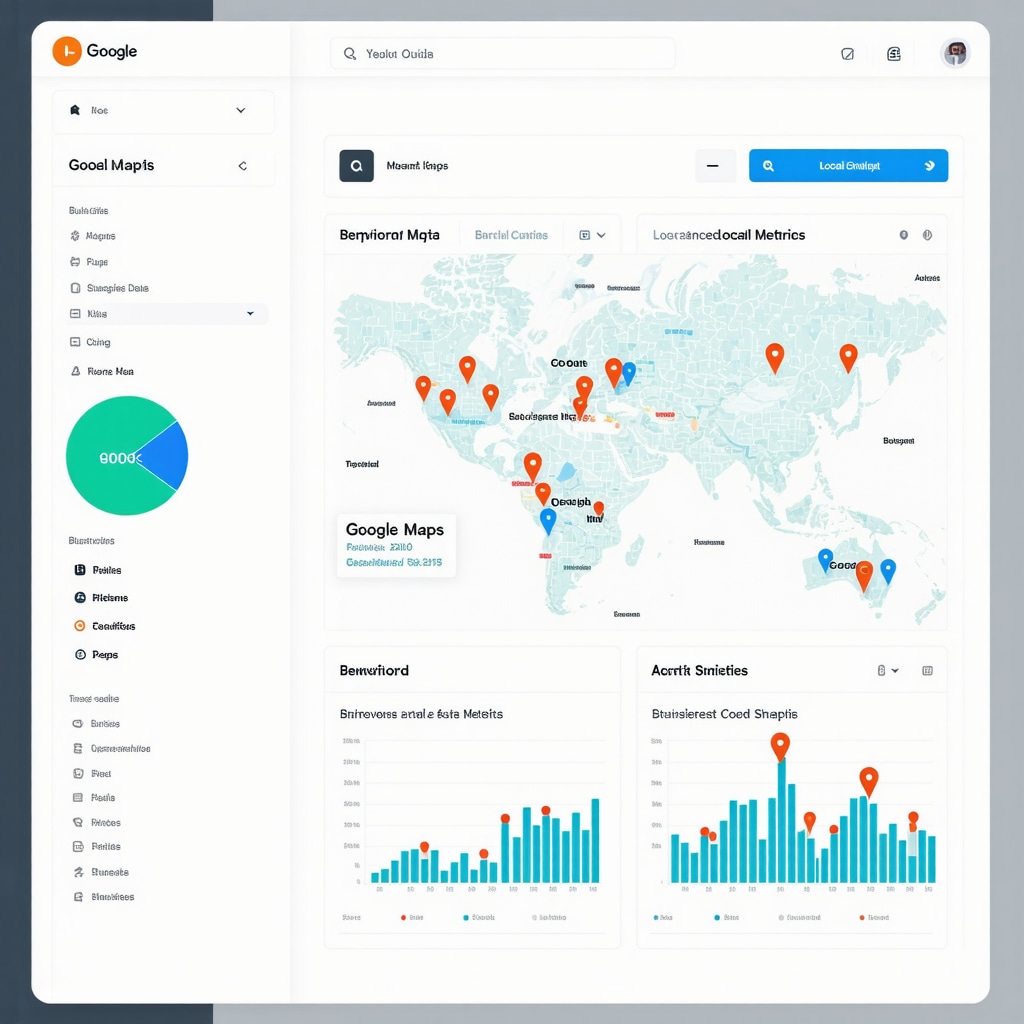
Call to Action: Propel Your Google Maps Optimization to Expert Heights
Are you prepared to transcend basic local SEO tactics and harness cutting-edge behavioral analytics coupled with structured data mastery? Engage with our seasoned experts for a comprehensive audit and bespoke strategy designed to maximize your Google Maps impact. Share your advanced optimization experiences or questions in the comments below and join a network of elite local marketers committed to excellence. For personalized consultations, connect with our Google Maps SEO specialists today.
Frequently Asked Questions (FAQ)
What are the most critical elements to optimize in a Google Business Profile for local search?
The most critical elements include consistent and accurate NAP (Name, Address, Phone number) data, comprehensive business categories, detailed business description with local keywords, updated business hours, high-quality images with geotags, and actively managed customer reviews and Q&A. These factors collectively enhance your local relevance and user engagement, which Google prioritizes in local search rankings.
How do customer reviews influence Google Maps rankings, and how should businesses manage them?
Customer reviews serve as strong trust signals to Google’s algorithm, impacting both ranking and conversion rates. Positive, detailed reviews highlighting specific services improve credibility, while prompt and professional responses to all reviews—including negative ones—demonstrate engagement and customer care. Encouraging authentic reviews and interacting with reviewers helps increase your profile’s authority and user trust.
Can structured data markup really improve my Google Maps SEO, and how is it implemented?
Yes, structured data markup like JSON-LD with LocalBusiness schema helps search engines better understand your business details, improving indexing and eligibility for rich snippets and enhanced local search features. Implementation involves embedding accurate business information, including geocoordinates, operating hours, and reviews, directly into your website’s code following Google’s guidelines, which reduces data inconsistencies and boosts local SEO effectiveness.
What role do behavioral signals play in Google Maps ranking, and how can I track and enhance them?
Behavioral signals such as click-through rates, click-to-call actions, direction requests, and time spent on your profile inform Google about your listing’s relevance and quality. Tracking these metrics through Google My Business Insights combined with Google Analytics and UTM parameters enables data-driven optimization. Enhancing behavioral signals involves creating compelling CTAs, engaging multimedia content, timely Google Posts, and integrating chatbots to sustain user interaction.
How important is local link building and citation management for Google Maps optimization?
Local link building and citation management are crucial for establishing authority and trustworthiness in your geographic area. Securing backlinks from reputable local organizations and maintaining consistent, accurate citations across niche directories and high-authority local sites consolidate your online footprint. Regular audits to fix inconsistencies prevent dilution of your SEO efforts, significantly improving Google Maps ranking.
How can I optimize my Google Maps listing for voice search queries?
Voice search queries are conversational and often question-based. To optimize, integrate natural language phrases and commonly asked questions with concise answers into your business description and posts. Maintaining up-to-date and structured business information ensures voice assistants can accurately retrieve and present your details, increasing your chances of appearing in voice search results.
What are the benefits of leveraging Google Maps interactive features like Posts, Q&A, and Messaging?
These features foster active engagement and demonstrate business responsiveness. Posts keep your listing fresh with timely updates and promotions; Q&A allows you to proactively address customer questions, reducing friction; Messaging enables real-time conversations that can convert inquiries into sales. Collectively, these interactions boost your profile’s activity signals, positively influencing local search rankings.
How can seasonal updates and local events be used to improve Google Maps visibility?
Aligning your profile with seasonal trends and local events by updating business hours, promoting special offers, or publishing event-related posts taps into timely search intents. This relevance signals to Google that your business is active and connected within the community, helping elevate your local search ranking during peak interest periods.
What advanced tools or techniques can help audit and improve my local citations?
Tools like BrightLocal, Whitespark, and Moz Local offer comprehensive citation auditing to detect inconsistencies, duplicates, and missing citations. They also help identify high-authority local sites for citation acquisition. Regular citation audits and strategic outreach ensure your NAP information is accurate and authoritative, which strengthens your local SEO foundation.
How can partnering with local influencers enhance my Google Maps engagement?
Local influencers can generate authentic user content and reviews, expanding your reach to their engaged audiences. Their endorsements often lead to increased profile visits, calls, and foot traffic. Selecting influencers aligned with your target market and encouraging them to share experiences and reviews can boost your credibility and visibility on Google Maps.
Trusted External Sources
- Moz Local Search Ranking Factors: An authoritative annual study providing data-driven insights on the ranking influences in local SEO, including Google Maps optimization techniques.
- Google Developers – LocalBusiness Structured Data Documentation: Official technical guidelines on implementing structured data markup to enhance local SEO and eligibility for rich search results.
- BrightLocal Citation Management Tools: Industry-leading platform for auditing, tracking, and optimizing local citations and managing online reputation effectively.
- Search Engine Journal – Voice Search SEO Guide: Comprehensive resource detailing strategies to optimize for voice search, an increasingly crucial local search modality.
- Google My Business Help Center: The official resource for best practices, feature updates, and optimization strategies directly from Google.
Conclusion
Optimizing your Google Maps listing demands a multifaceted approach that blends foundational profile accuracy with advanced tactics such as structured data implementation, behavioral signal enhancement, and strategic local link building. By meticulously managing your Google Business Profile, leveraging interactive features, and continuously analyzing user engagement data, you position your business to capture valuable local traffic efficiently and sustainably. Incorporating voice search optimization and aligning content with seasonal and community events further refines your competitive edge.
Mastery of these expert-level strategies transforms your Google Maps presence from a static listing into a dynamic, authoritative local powerhouse. Take the next step in your local SEO journey by applying these insights, sharing your successes, and engaging with a community of dedicated professionals. Elevate your local dominance today and watch your business thrive in the digital landscape.
